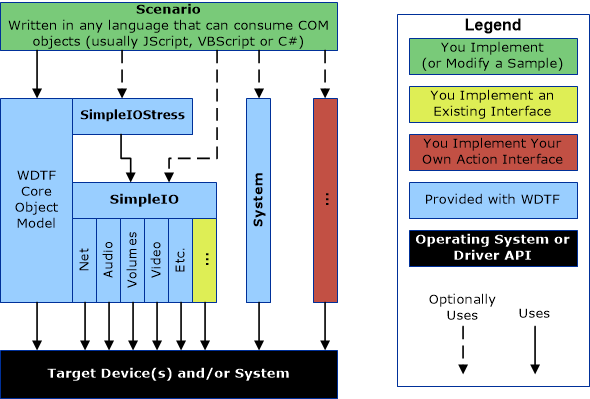Extending the Framework
WDTF is built to be extendable. Extendibility is possible in three distinct ways, as the following illustration shows.

The following list describes the three extensibility methods, in order of difficulty:
Modify a sample script. This method is shown with green in the preceding figure. You can take one of the WDTF-provided sample scripts and modify it for your scenario. You can also create WDTF scenarios from scratch.
Implement an existing action interface, like SimpleIO. This method is shown with yellow in the preceding figure. You can implement an existing action interface to extend the types of targets that the interface functions on. If you implement a SimpleIO for your device type, all of the existing WDTF-based scenarios will automatically start performing I/O verification of your device.
WDTF provides a Microsoft Visual Studio template to aid in implementing SimpleIO. For more information, see Writing a WDTF SimpleIO plug-in for your device.
Create (and then implement) a new action interface. This method is shown with red in the preceding figure. If the functionality that WDTF provides is insufficient to construct your component-based scenarios, you can use WDTF to create new components.
This method is the most difficult of the three methods because it requires COM interface design skills. You must be able to design and implement simple abstractions of your functionality by using a COM-automation interface.